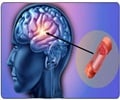Using peptide-DNA platform in tissue engineering applications closely replicates dynamic interactions taking place in vivo, not possible with existing methods.
- One of the greatest advancements in medicine in recent times has been the use of tissue engineering technologies for the therapy of a wide-range of diseases
- Peptide-DNA (p-DNA) platform takes bio-engineering technology a step further, creating programmable and dynamically active bio-materials that mimic responses taking place within the body
Peptide-DNA Programmable Hybrids – What Is New?
If we take a look at what happens inside the cells within our body, there is constant cell signaling going on that instructs the cell to synthesize or stop synthesis of specific proteins, for injured cells to repair and regenerate, by multiplying and undergoing specific changes, and several complex processes occurring simultaneously. All these are, in fact, orchestrated by genes that are turned on or turned off as appropriate (dynamic nature of cell) to maintain the tissues and the body in a physiological state of balance and homeostasis.The current study aims to address this problem and create smart bio-materials that are able to control the signal characteristics, and promise to take tissue engineering technology and its applications to an entirely new level and more effectively, innovatively and rationally treat several diseases in the future.
To achieve this, the study team employed DNA which is a good candidate since it can be programmed to deliver specific signals to cells and also be covalently bound to other molecules as we will see below.
Peptide-DNA Technology In Tissue Engineering – How It Works
- First of all, the bio-materials are coated with several strands of DNA designed to carry a specific signal that instructs the cell to perform a certain specific task.
- Next peptide-DNAs are created by linking peptide or protein covalently to complementary DNA strands to the DNA bound to the bio-material as described above.
- To activate these cell signals, the p-DNA combination is added to the bio-material carrying the complementary strand. Binding of the 2 strands of DNA creates a double helix that then displays the signal.
- Once the signals are activated, specific cell behaviors as needed will be activated making this tissue engineering system a dynamic one and a smart way to approach therapy.
- When the desired function is over, the signal gets switched off. To turn it back on, more p-DNA hybrids need to be added to turn the same or a different cell function on.
- The team also designed DNA strands carrying strategically placed (orthogonally or perpendicularly) synergistic signals which can influence two or more cell functions simultaneously.
- The process can be repeated for multiple cycles as needed for different signals.
What Are Neurospheres?
The study team also reports that neural stem cells in the spinal cord, initially grouped into structures known as "neurospheres," can be made to migrate out and differentiate using specific signals. But when this signal is switched off, the cells spontaneously re-group themselves back into colonies.This observation of neurospheres behavior was made possible by their dynamic p-DNA platform, which would not have been possible if a persistent signal was applied continuously without reversal.
More research into such cell types may provide understanding and insight into the complex interplay between cells, and cell-matrix interactions that are critical for regeneration or development.
Scope Of Current Study
- The potential use of the new system to program cells could help cure a patient with Parkinson's disease (and several other diseases).
- Using available existing techniques the patient's own skin cells could be converted to stem cells. However, the novel p-DNA technology could then help expand the newly formed stem cells in the lab (in vitro) - and then drive their differentiation into dopamine-producing neurons before implanting back to the patient.
- Currently the technology is employed in the lab only (in vitro) with the idea of then transplanting the created cells. However, Stupp states it might be possible to perform this process directly in vivo in the future.
- The stem cells would be implanted in the clinic via an injection and targeted to a particular spot. Then the soluble molecules would be administered to the patient to then regulate proliferation and differentiation of the transplanted cells.
- Ronit Freeman, Nicholas Stephanopoulos, Zaida Álvarez, Jacob A Lewis, Shantanu Sur, Chris M Serrano, Job Boekhoven, Sungsoo S. Lee, Samuel I. Stupp. Instructing cells with programmable peptide DNA hybrids. Nature Communications, 2017; 8: 15982 DOI: 10.1038/ncomms15982 Source-Medindia














